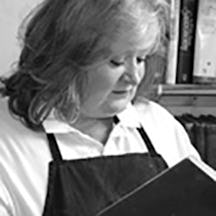'Bake-Off' finalist Mary-Anne Boermans treats us to the warm and enticing pleasures of gingerbread over the centuries.
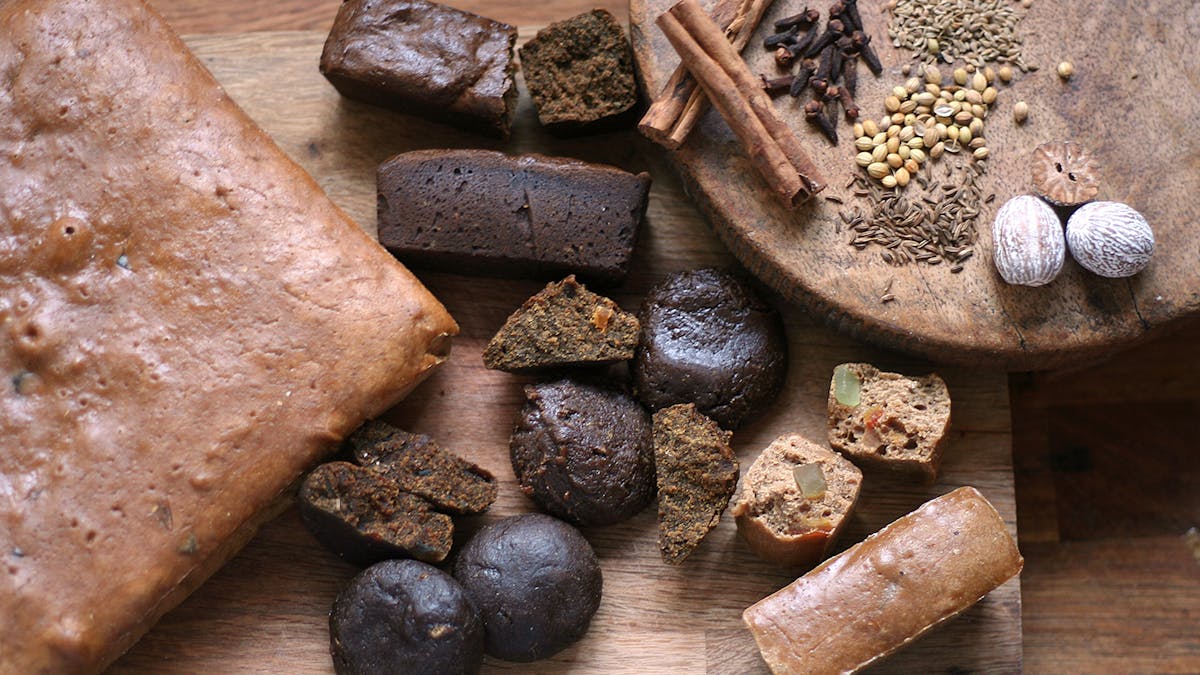
Following its introduction to Europe in the 10th century, gingerbread quickly became an enjoyable way to partake of the beneficial effects of ginger. However, importing the dried ginger was expensive, even for the nobility who would enjoy it, so cooks cleverly found ways to replicate the spicy flavour with cheaper ingredients.
A recipe dating from the 15th century uses a combination of honey, saffron, pepper, cinnamon and breadcrumbs, coloured with ground red sandalwood, to make gingerbread in the form of a sweetmeat.
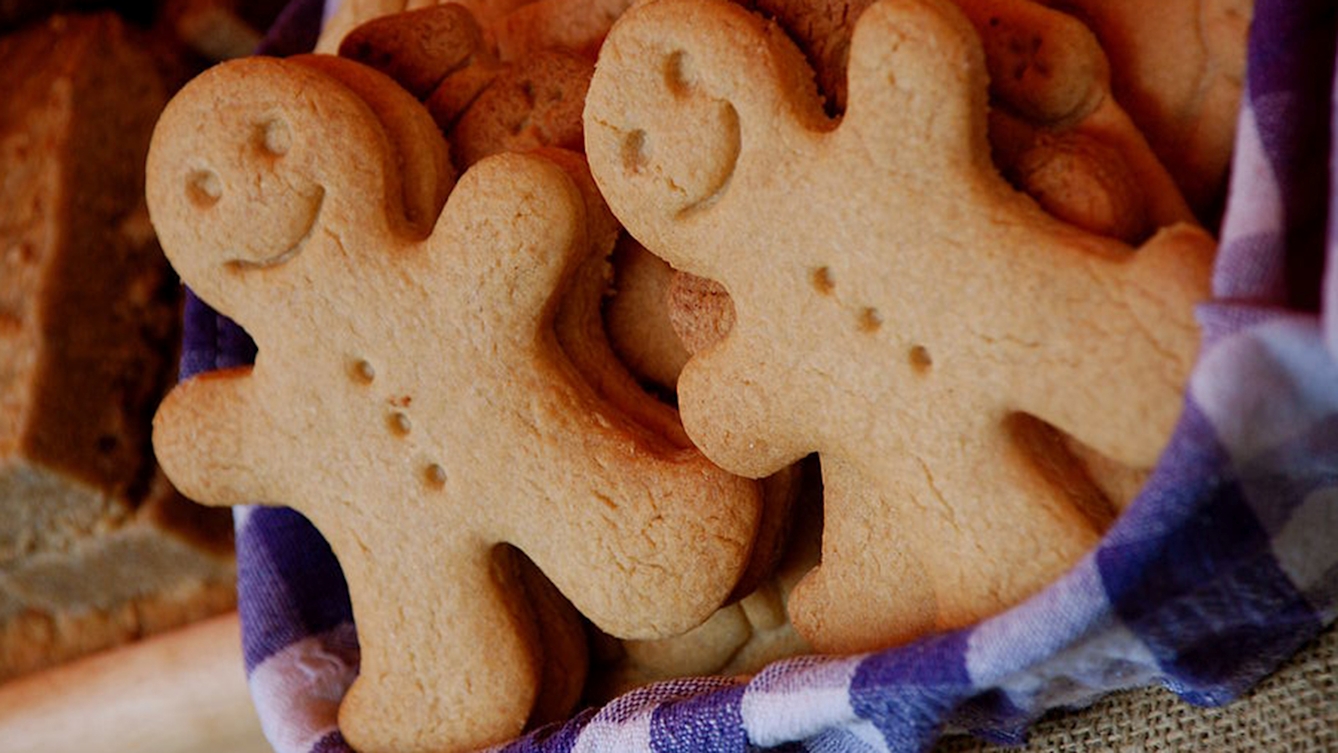
Queen Elizabeth I used to honour visiting guests and ambassadors by presenting them with their likenesses created out of gingerbread, a custom that led to our modern gingerbread figures. And the Queen’s favourite playwright also bears witness to its popularity.
And I had but one penny in the world, thou should'st have it to buy gingerbread.
Gingerbread was seen as more than just a special treat. The beneficial medicinal properties of ginger as a remedy for numerous ailments, especially those connected to the stomach, were also conferred upon gingerbread. The herbalist William Coles (1657) offered a gingerbread recipe that had certain curative properties:
Moreover with the Juyce of Liquorice, Ginger and other Spices with fome Wheaten flower, Gingerbread is made, which is also very good against a Cough, and all infirmities of the Breaft and Lungs.
In a 16th century list of remedies to “prevent abortion”, amongst cures such as "the skin of a seahorse" and "a wolf's skin", “gingerbread applied” (as opposed to eaten) is another suggestion . ('A Treatise of Medicines' by M. Tauvry, 1700).
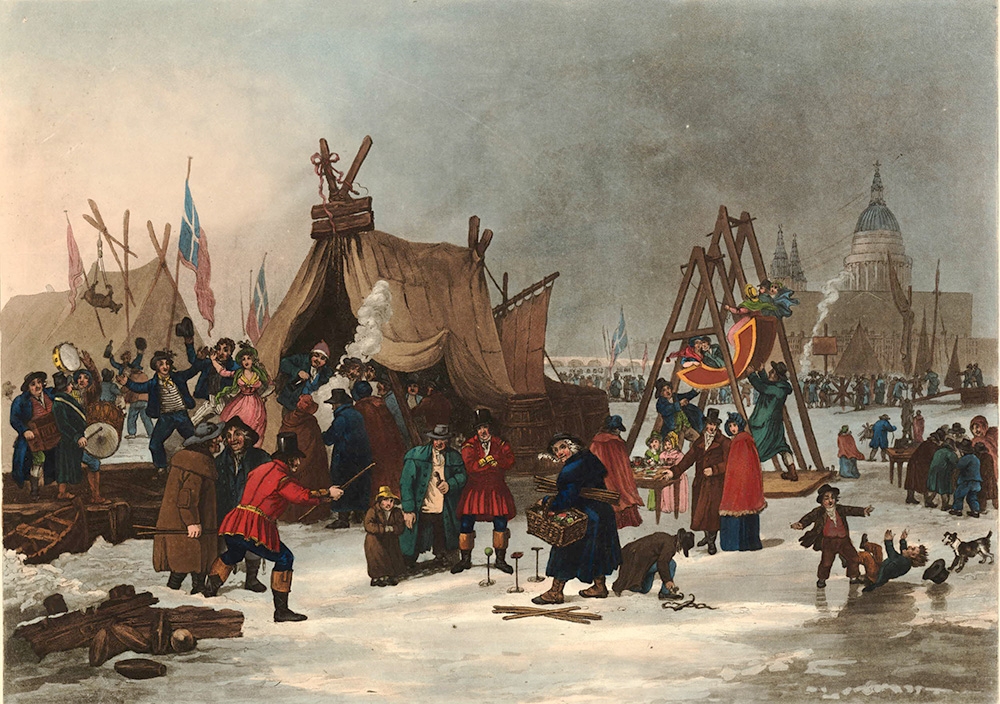
The Fair on the Thames by Luke Clenell, 1814.
By the 18th century gingerbread stalls were fixtures in a great many public holiday gatherings. The Gentleman’s Magazine (June 1839) recalls that the open area of London just north of Pimlico originally called the Five Fields (modern Belgravia) was “frequented by holiday makers in thousands, for whose delight drinking booths, swings, gingerbread stalls and various less reputable entertainments abounded".
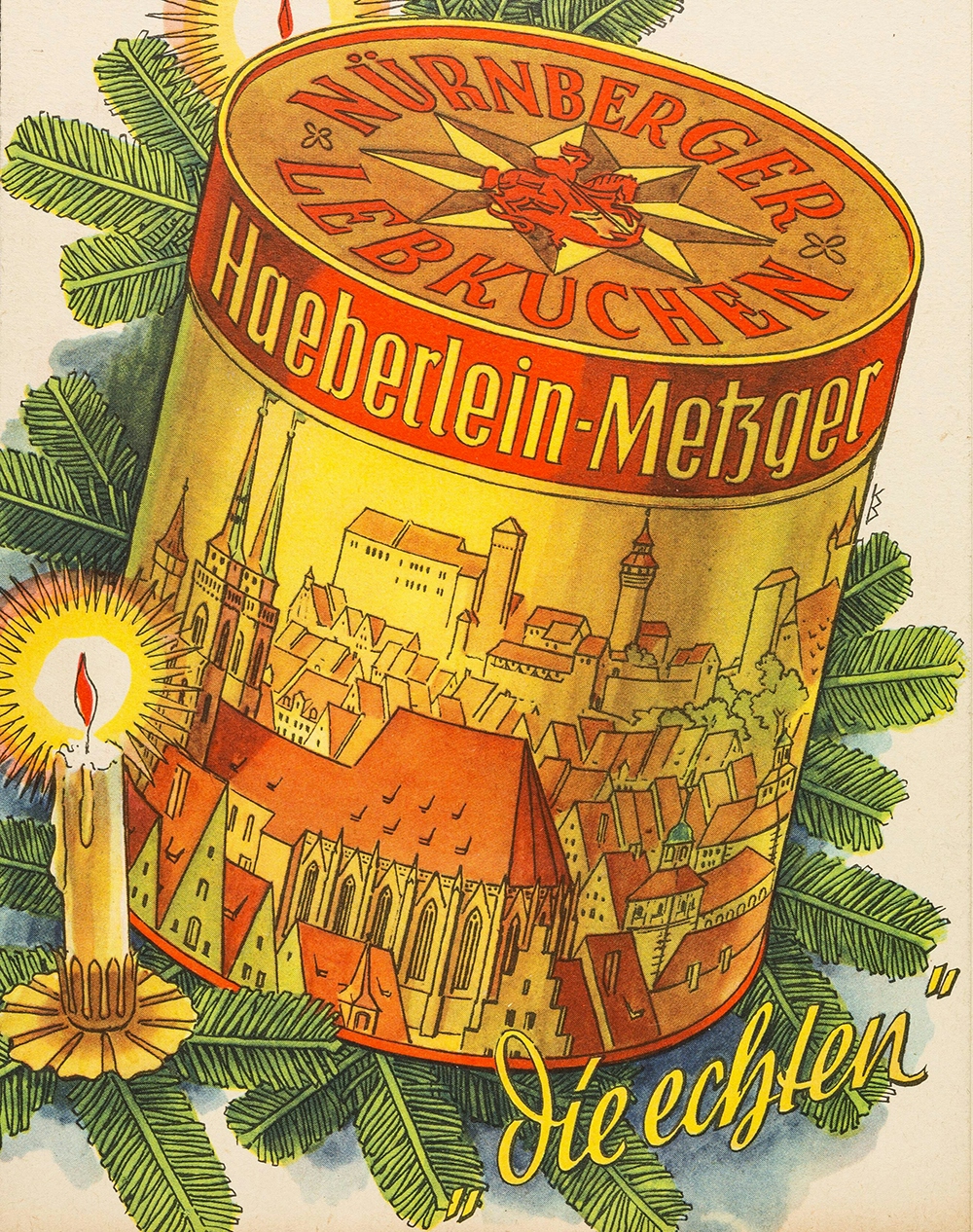
A Christmas advert for German lebkuchen from Nuremburg, 1950-59.
Nowadays, there are many variations on gingerbread - gingerbread houses made of crisp biscuit, the soft, crumbly, German lebkuchen, and the sweet and sticky desert cake - to name just three. Whatever form it takes, the gingerbread will be flavoured chiefly with ginger, either dried and ground or perhaps preserved for a bit of an indulgence.
But offer these treats to someone from the 17th or 18th centuries, and they might well be disappointed, since their gingerbread was much more complex.
Amongst the recipe books and household manuals from this period amassed by Wellcome Collection, it’s rare for there not to be at least one form of gingerbread recorded by the mistress of the house. And even the most cursory glance through the ingredients reveals gingerbreads with a riotous assembly of spices and flavourings.
Madam Bridget Hyde's recipe book (1676-1690) notes that gingerbread is "...good for the wind in the stomach” and being made from ground almonds, is also gluten free.
In addition to a cornucopia of spices, Elizabeth Jacob's 17th-century recipe also includes treacle, which is unusual for the time. There's no indication whether the author intends that the spices be ground to a powder or not, but it seems likely.
Not only would this release the maximum possible aromatic flavours from the caraway, mace, cloves, “cinament” and “peper” and of course ginger, listed, but the coriander and fennel also included are rather substantial seeds and could prove painful to bite on if left whole.

Cinnamon sticks, whole nutmegs, fennel, caraway and coriander seeds, and cloves

Gingerbread recipe from Elizabeth Jacob's book of "physicall and chyrurgicall receipts. Cookery and preserves.", 1654-c.1685.
One gets a real sense of urgency in another, early 18th-century recipe, scribbled down in one, long, un-punctuated blurt of ingredients, almost as if the author was hurrying to get everything listed before they forgot something. It includes nutmeg and “cardimon” in addition to everything else listed for the recipe above.
The messy scrawl is in contrast to the precise measurements of the spices and suggests that these expensive ingredients were both treasured and handled with care.
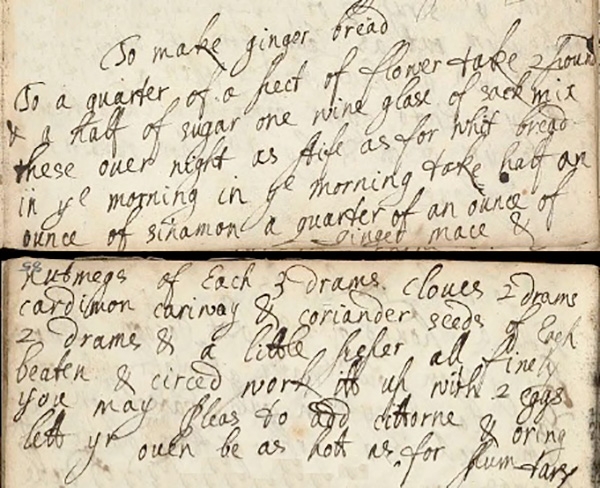
Gingerbread recipe in a family recipe book owned by Amy and Mary Eyton and others, 1691-1738.
So if you are planning any warming, gingery baking this holiday seasoning, maybe experiment with some of the unusual and beneficial seeds and spices used in the health-giving recipes from centuries ago.
Your stomach will thank you for it.
About the contributors
Mary-Anne Boermans
Mary-Anne was a finalist in the 2011 broadcast of The Great British Bake Off, and winner of the 2016 Celebrity Bake Off. Her first book, 'Great British Bakes', won the 2014 Guild of Food Writers Jeremy Round Award for Best First Book.
